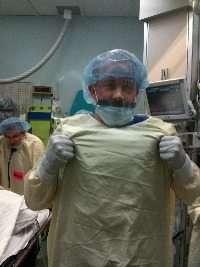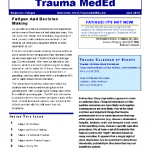Yesterday I tried to clarify the most commonly assigned type of trauma mortality, anticipated mortality without opportunity for improvement (AMW/OOI). Today, I’ll cover another, and I’ll finish the series on Monday.
Old nomenclature: potentially preventable death
New nomenclature: anticipated mortality with opportunity for improvement (AMWOI)
Again, these sound somewhat similar but they are quite different. Potentially preventable death used to be applied to patients who had obvious care issues that had some potential to change outcome. But it also contained a number of patients discussed yesterday who had support withdrawn due to age or degree of injury. There was some nagging doubt that, it something else had been done, maybe they would have recovered. So several of the “potentially preventable” deaths in the old category have been moved to the “without opportunity for improvement” category.
Unfortunately, a larger group of patients from the nonpreventable death category have moved into the “with opportunity for improvement” category. This is actually a good thing, though. The AMWOI category looks at whether there were any care issues, regardless of whether support was eventually withdrawn.
Whereas the vast majority of deaths at any center should fall into the AMW/OOI category, a modest number will be classified as AMWOI. The actual number depends on how broadly or narrowly an opportunity for improvement is defined. If you consider a few areas of missing documentation on the trauma flow sheet an opportunity for improvement, then you’ll have a lot of deaths classified this way. Concentrate on issues that might have actually had an impact on the outcome. The key is to develop a set of criteria that is realistic and that work for you. If the number of AMWOI deaths seems high, go back and look at those criteria and adjust them. You can still work out a system for improving trauma flow documentation without it changing every death in a trauma activation to one with an opportunity for improvement.
Monday, I’ll finish up with a few words on unanticipated mortality.
Related posts:


